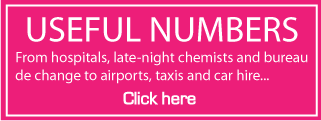
Hollywood Great have them, TV celebrities have them, International VIPs have them…..Face lifts!
Not everyone owns up, of course, but why should they when the whole point is to retain a youthful appearance for as long as possible. One can’t stop the ageing process but one can take away the signs of ageing. According to leading cosmetic surgeon Mr. Douglas Harrison: “Face lifts are normally carried out from the age of 48 years”. Most, at this age, wish to have their necks corrected as well as their faces. Before this age, where the neck is not involved, via a small incision in front of the ear, the face and jowls can be freshened by suitable adjustment of the facial tissues secured to a fixed point in the temporal region. This ‘mini’ lift procedure takes less time than a face lift and can usually be carried out as a day case, sometimes under local anaesthetic and sedation.
A full face lift
Mr. Harrison, a pioneer in facial palsy surgery whilst working in the National Health Service, has been in private practice in Harley Street for many years where he focuses on cosmetic surgery. On questioning why 48 years is usually the age for face lifts he says that: “the ageing process relates to the type of skin, whether it be thick or thin, exposure to the sun, changes in weight and smoking. Many women however do show sufficient signs of ageing at the age of 48 that they would benefit by some surgical help. It is likely that the ageing process itself relates to hormones”. The incision is usually made around the tragus of the ear into the sulcus behind the ear and then into the hairline at the back and, in days gone by, just the skin was lifted and re-draped. In the neck there is the platysma muscle which is vertically orientated and passes up into a tissue plane in the cheek. These structures are called the submuscular aponeurotic system or SMAS. Nowadays, most face lifts involve drawing the SMAS layer in a vertical and backward direction taking with them the fat and skin of the face. 10 years ago these SMAS dissections were quite intrusive but now most surgeons tend to be more conservative reducing the risk to the patient and providing just as good a result. For a period, it was popular to elevate the whole face by dissecting down to the bones but this has lost its popularity and is used mostly in reconstructive procedures. The principle of a face lift is to remove jowls, provide a sharper jawline and improve the angle between jaw and neck thus creating a more youthful appearance.
Extra touches that may be required
Mr. Harrison says that “a surgeon looks at the whole of the face when deciding how the patient may be improved and it is best to produce an overall freshening rather than just one area as otherwise it can look incongruous”. For example, the ageing process often produces excess skin in the upper eyelids and possibly the lowers so much that an upper and lower eyelid reduction may be quite likely and necessary with a face lift. In some cases, lower eyelid skin may not be redundant but just have fatty bags. The latter can be removed via a transconjunctival incision and therefore not producing any scar superficially. Lines on upper lips can be removed in various ways. Dermabrasion, a form of controlled burn, can eradicate them virtually permanently. If the brows have descended as well as producing excess skin in the upper eyelids an endoscopic brow lift can be a very freshening procedure converting a rather irritable appearance into a more happy disposition. Rebalancing the facial skeleton with cheek or chin augmentation, which can be carried out quite easily with a face lift, can sometimes provide the little extra which makes all the difference to the final result which, in many ways, is just revealing the underlying bone structure.
Certainly, upper eyelid reduction is a procedure that produces a huge return for a small investment. Most of this surgery is time consuming and has to be done meticulously. It is therefore quite expensive but not as much as the depreciation on an expensive motor car. If you wish to benefit from Mr. Harrison’s expert opinion it costs £150 and I am sure you are worth it, aren’t you!
DOUGLAS H
HARRISON, F.R.C.S.
SUITE 2
14 QUEEN ANNE STREET
LONDON,W1G 9LG
TEL: 020 7580 7555
FAX: 020 7636 6669
DHHARRISON@HOTMAIL.CO.UK







